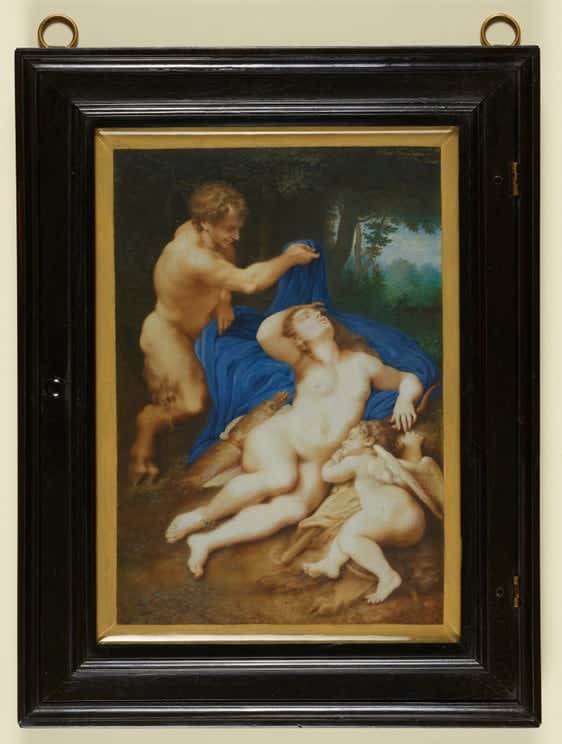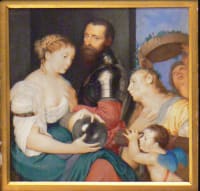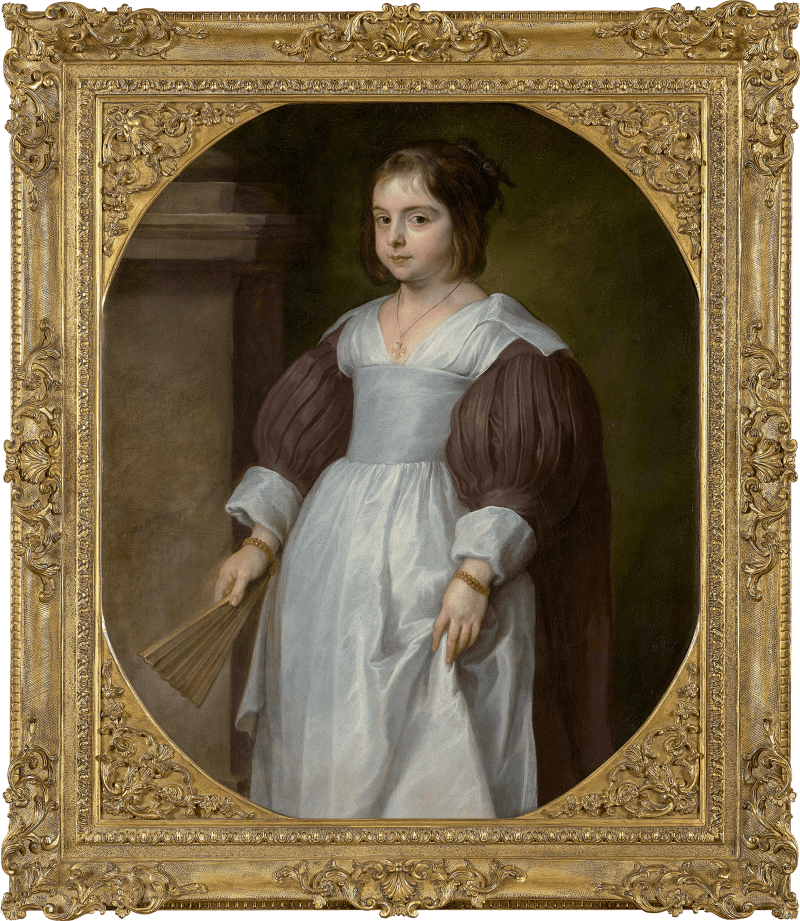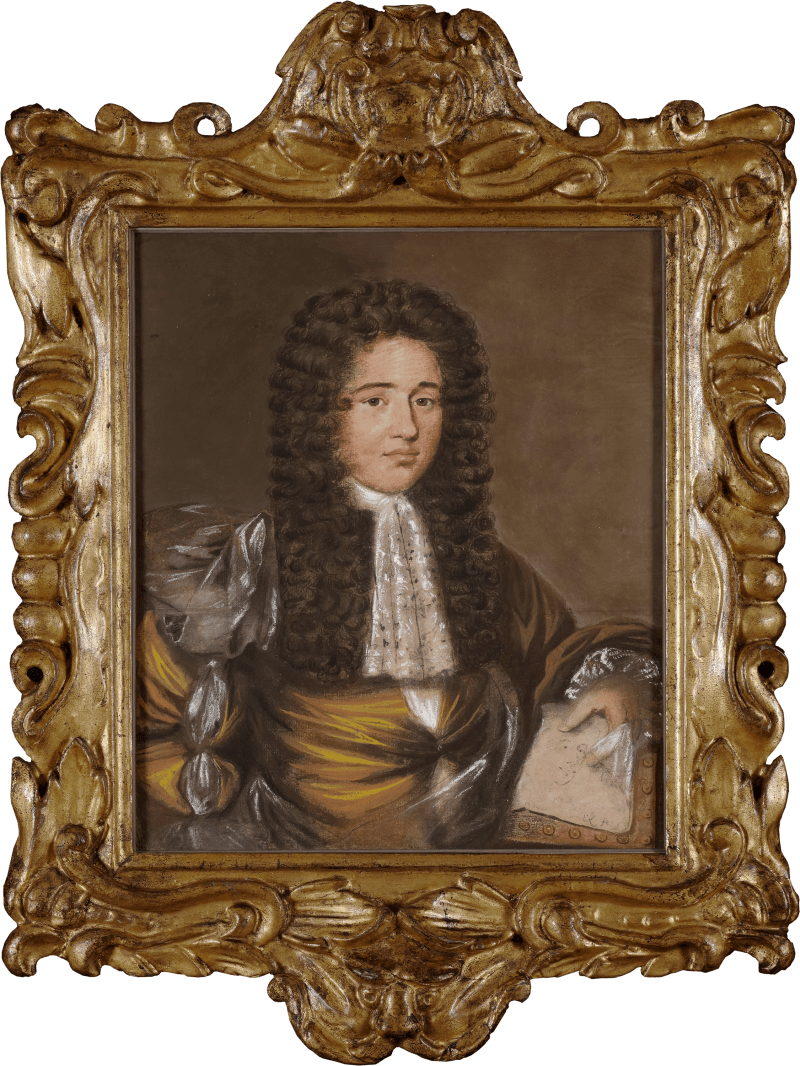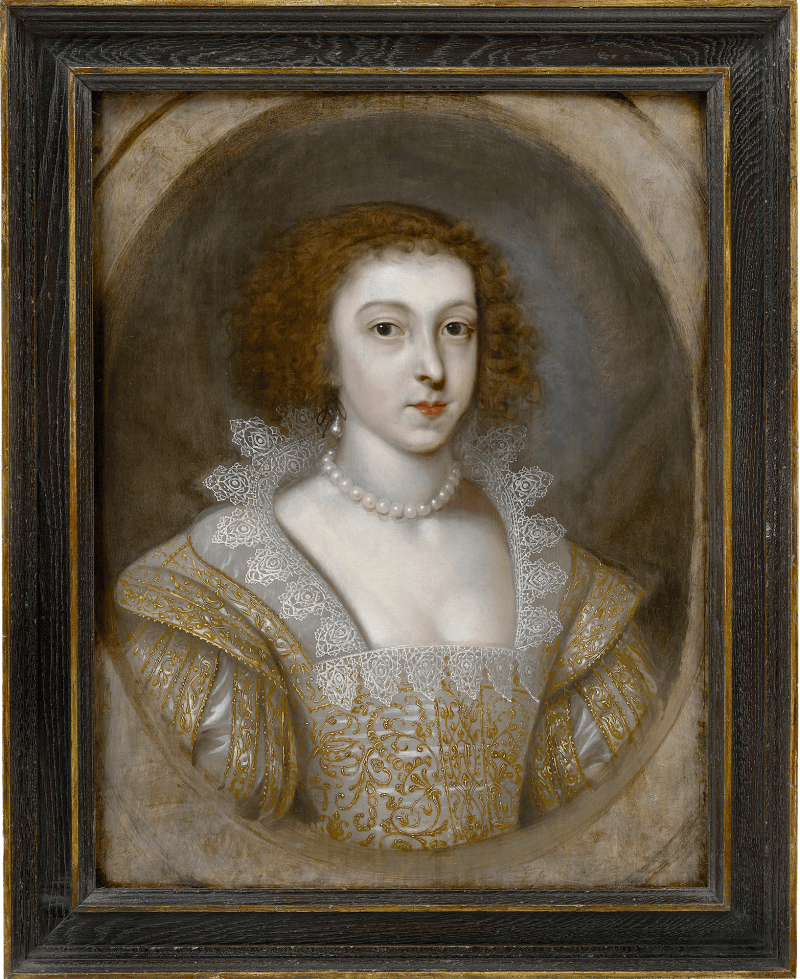This exceptionally rare ‘cabinet’ miniature was painted by the Stuart court painter Peter Oliver and is one of the most important examples of his work to appear on the open market.
The subject of this lyrical work is the New Testament story of the Flight into Egypt. Joseph is warned in a dream that King Herod is seeking the infant Jesus with the intent of causing him harm and thus flees with Mary and Jesus to safety in Egypt. As was often the case with ‘cabinet’ miniatures, this work reproduces (and in areas reinterprets) a celebrated Old Master painting – in this instance a now-lost work by Titian (1488-1576), a copy of which is now in the collection at Longleat House. Although Oliver appears to have faithfully reproduced the composition in general, on closer inspection one notices idiosyncratic flourishes of imagination that only a highly talented and confident artist would dare include. The structure on the far rocky mound, for...
This exceptionally rare ‘cabinet’ miniature was painted by the Stuart court painter Peter Oliver and is one of the most important examples of his work to appear on the open market.
The subject of this lyrical work is the New Testament story of the Flight into Egypt. Joseph is warned in a dream that King Herod is seeking the infant Jesus with the intent of causing him harm and thus flees with Mary and Jesus to safety in Egypt. As was often the case with ‘cabinet’ miniatures, this work reproduces (and in areas reinterprets) a celebrated Old Master painting – in this instance a now-lost work by Titian (1488-1576), a copy of which is now in the collection at Longleat House. Although Oliver appears to have faithfully reproduced the composition in general, on closer inspection one notices idiosyncratic flourishes of imagination that only a highly talented and confident artist would dare include. The structure on the far rocky mound, for example, has been entirely omitted and a horse with an attendant has been included in the middle distance heightening the sense of perspective. In the original work a tree can also be observed between the figure of Joseph and Mary which in this work has been moved to the left and replaced with a more delicate cluster of branches. The infant Jesus too has been repositioned and now faces out towards Joseph, creating a more open and dynamic composition.
Known in two versions (the other example being in the collection at the Victoria and Albert Museum, London), The Rest of the Flight into Egypt was one of the earliest compositions painted by Oliver on an enlarged ‘cabinet’ scale, having been painted c.1628. One version of this composition was recorded as being in the collection of Charles I, and although this was long considered to be the example in the V&A collection, the measurements stated (6 1/8 x 9 3/8 inches) are in fact an exact match with those of the present work, the other example being slightly larger (6 3/8 x 10 inches). That having been said, the Keeper of the Royal Collection Abraham van der Doort (1575/80-1640) noted the work as being signed whereas our example appears to be unsigned.
If we are to presume that our work was not the example owned by Charles I, then it must be an exact replica painted by Oliver and kept for his personal enjoyment. That this was standard practice for Oliver is confirmed by George Vertue (1684-1756), who recorded in his notebook: ‘P. Oliver the limner generally when he painted any picture for the King, Charles the First, he made a duplicate for himself, it happened in the troubles of his time & afterwards that most of the [Royal] limnings were lost or pilferd or sold that when the restoration of his son came to pass none of these pictures were to be found.’[1]
Regardless of which version was the one recorded in the Royal Collection, the mere existence of such an object in the collection of Charles I reveals much about his personal taste in English art at this date. As discussed in an essay by Richard Chadwick in the catalogue for this gallery’s Secret Faces exhibition in 2008, we know that Charles commissioned from Oliver no less than 12 cabinet miniatures (or ‘histories) between 1628 and 1639 for his cabinet room. Judging by the fact they were displayed in glass cases with ‘locks a keys’ we can assume they were highly prized by the King. This appreciation would no doubt have come as a relief to Oliver, who was known to have worked for up to 2 years on some of his more cabinet works.
As a rare survival of this most coveted art form, the present work is of significant academic and artistic importance and allows a unique glimpse into the one of the most celebrated periods of art collecting in British history.
[1] Vertue, Notebooks, Walpole Society, Vol. 1 (1929/30), p.66




